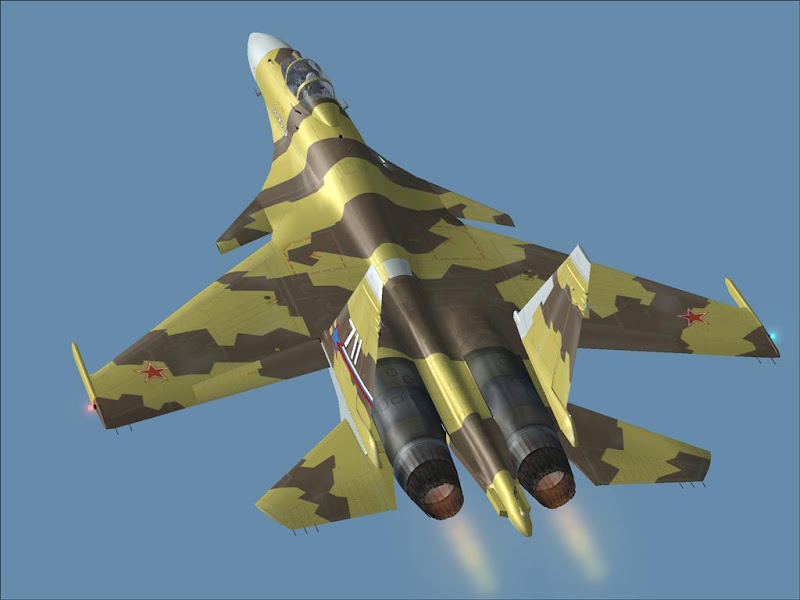 Su-37 Super Flanker is a super-maneuverable thrust vectoring fighter derived from an Su-35 prototype. The last Su-35 prototype - number 711 - was fitted with Lyulka Saturn AL-31FU engines that incorporate two-dimensional thrust-vectoring (TVC) nozzles. Externally same as the Su-35 - apart from the nozzles - the Su-37 contains with a side-stick controller and has demonstrated some superb manoeuvres, including an entire 360deg Cobra - called a Kulbit.
Su-37 Super Flanker is a super-maneuverable thrust vectoring fighter derived from an Su-35 prototype. The last Su-35 prototype - number 711 - was fitted with Lyulka Saturn AL-31FU engines that incorporate two-dimensional thrust-vectoring (TVC) nozzles. Externally same as the Su-35 - apart from the nozzles - the Su-37 contains with a side-stick controller and has demonstrated some superb manoeuvres, including an entire 360deg Cobra - called a Kulbit.The Su-37 represents the latest level of capability compared with the Su-27 and Su-35. The Su-37 test aircraft made its maiden flight in April 1996 from the Zhukovsky flight testing center close to Moscow. This spectacular single-seat all-weather counter-air fighter and ground attack aircraft, derived from the SU-27, has an updated airframe containing a high proportion of carbon-fiber and Al-Li alloy. The engines, avionics and armaments are also enhancements on those originally put in in the SU-27.
This single-seat and/or two-seat multi-role combat aircraft was first shown in model form at 1991 trade shows. Some wind tunnel tests completed as the aircraft entered the basic design stage in 1992, with foreign partners being explore for development. not like the other twin-engine Su-27 derivatives, the Su-37 concept originally featured one Soyuz/Tumansky turbofan engine rated at 180 kN (40500 lb st) thrust with afterburning. What finally emerged from the design method was an excellent maneuverable version of the Su-35 with a combine of AL-37FU afterburning turbofans with axisymmetric, steerable nozzles and thrust vector control (TVC). When the Su-37 was shown at Farnbrough in 1996 it stole the show, performing an astounding aerobatic display.









